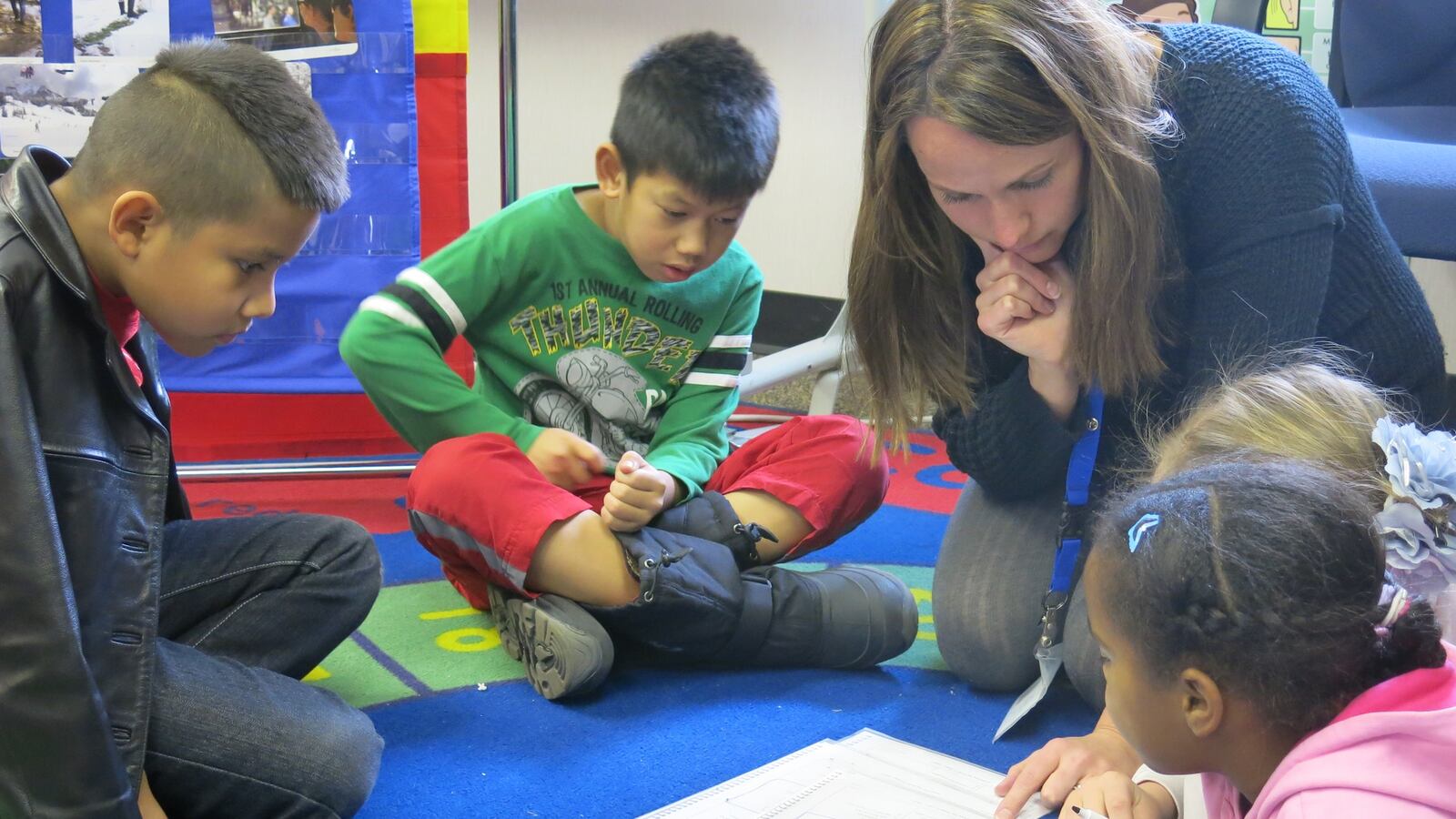Denver Public Schools was poised this spring to buy its first set of Common Core-aligned textbooks and materials for elementary- and middle-schoolers.
But after an extensive search, the district held off on buying a new curriculum for its K-3 literacy classes. Officials say that’s because a committee of teachers and experts couldn’t find quality books or resources written in Spanish and tailored to the needs of students who are learning English.
The textbook marketplace has taken time to catch up to the Common Core State Standards, which Colorado adopted as part of the Colorado Academic Standards three years ago. It’s been even slower to meet the demand for resources in Spanish.
“There’s nothing available that we think is rigorous enough for the Common Core and appropriate for a biliteracy environment,” said Alyssa Whitehead-Bust, the district’s chief academic officer.
To fill the gap, DPS officials had initially planned to write a Common Core-aligned curriculum that worked for Spanish-language instruction. The goal would also be to offer supports for English language learners who are instructed mainly in English.
The district backed off of that effort late last year, but said the subsequent search to find pre-written materials that are appropriate for English language learners and available in Spanish didn’t yield results.
DPS is required by a court-ordered agreement between it, the Congress of Hispanic Educators and federal Department of Justice to offer certain services for its English language learners, including instruction in Spanish for a portion of the 38 percent of Denver students who speak Spanish. Other English language learners, including some Spanish speakers, get specialized support from trained teachers while they are instructed in English.
According to district statistics, DPS students speak 172 languages.
Meanwhile, the Common Core places a premium on “authentic” texts that reflect what students might encounter in real life. Finding those texts for its Spanish-language classes in particular has been a challenge. “In general, there’s a dearth of materials written authentically in Spanish,” Whitehead-Bust said.
H. Gary Cook, the research director at the University of Wisconsin School of Education’s WIDA, a center that produces research, standards, assessments, and teacher trainings focused on linguistically diverse students, said that’s no surprise. “Even content for non-English language learners is still emerging, and the types of activities that teachers and students are supposed to be doing to support the Common Core are very different than what they were doing before.”
Cook said it’s not an easy task making sure activities and lessons, especially for younger students, are on target for the more rigorous standards and for individual students’ widely-varying levels of fluency in English.
“There’s very little, if any, research and evidence about any curricular material around how it affects students’ language development, acquisition and proficiency,” he said. “Each individual learns differently.”
DPS did find a literacy program for grades 4-8 that officials say is appropriate for English learners. The program, called EngageNY, was developed by Expeditionary Learning.
It also adopted a new math program for middle schoolers known as Connected Mathematics Project 3, developed by publishing giant Pearson. That program is also available in Spanish.
The district plans to research and adopt Common Core-aligned materials for other subjects and grade levels in coming years.
Meanwhile, K-3 teachers will supplement the lessons with a guided reading program that was piloted in some schools in southwest Denver last year. DPS says it will also offer training in Common Core for teachers working with English learners.
And Whitehead-Bust said the district is considering working with external experts to develop a curriculum for younger elementary students. “We found we needed to be more proactive…We’re hoping that if we engage with publishers now, it will allow us to have greater assurances that a year from now, somebody will produce that resource.”
The curriculum decisions affect most, but not all, district schools. DPS charter and some innovation schools have the ability to adopt their own curricula.

